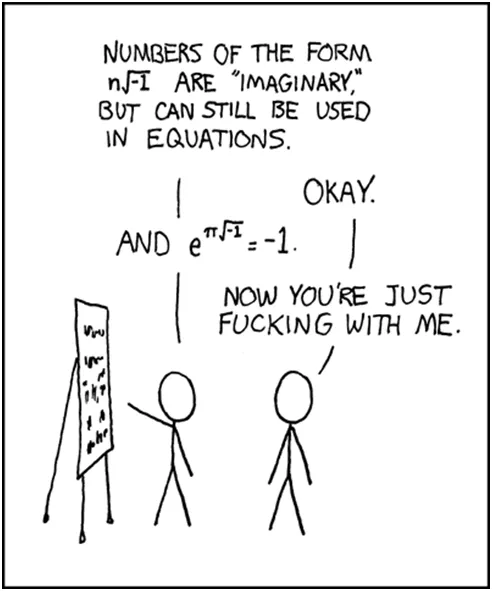The 3 pillar formula can help you growth hack your app
Every app developer dreams of building blockbuster apps like Tinder, Clash of Clans or Uber. While these are three totally different apps from different segments, they have one commonality - they’re all chart toppers. Now, what if you could fit not just these three, but every other successful app into a simple formula? Well, you can.

3E Formula
Every popular app gets a high score when you apply the 3E formula. But what is 3E? The 3E formula is a framework that helps you growth hack your app objectively. It tells you which aspects of your app are in need of attention. The formula can be stated as follows-
App Score is proportional to Entry x Engagement x Ecosystem
S ∝ En*Eg*Ec
Now, let us understand how 3E works. The score of an app as per the 3E framework is proportional to the product of the following three functions.
Entry (En):
How many entry points does the app have, or what are the ways by which a user can come back to your app? This can be expanded into multiple categories, like organic, forced, promoted and peer. In a nutshell, entry is essentially anything that you can think of to get the user to land on one of your app screens.
Engagement (Eg):
People think engagement is the Holy Grail metric for app success, rewarding yet elusive. But did you know engagement can be broken down into just two types of actions? (Yes, for every app you can think of). A core action, followed by a trigger to another core action.
Eg = Ca → Ta → Cb → … Tn → Exit
Every app has one (or more) core actions that can be performed in it. And the engagement gets better when completion of one core action (C) triggers (T) another. Sometimes, the trigger works, and sometimes, it doesn’t. When it doesn’t, the user exits the app. We will expand on this in another post.
Ecosystem (Ec):
Ecosystem can also be called Scale. This function will be boosted by user acquisitions. Also, this is one of the hardest variables to boost, since it is dependent on user acquisition or the size of the user base.
I will explain how to go about improving each of the three E’s in separate posts. But for now, let us see how these impact the App Score.
Let’s assume each of the E’s can have a score of 0 to 1.
I earlier stated that the App Score is proportional to En*Eg*Ec. For the sake of simplicity, let’s write
S = k*En*Eg*Ec
And for this exercise let’s keep k = 100 (So that App Score is between 0 and 100).
Now, if you’re still wondering how this works, let me show you some examples.
Facebook is one of the most popular apps out there. And it has a huge level of engagement (Eg). Why? Because one of the core actions is reading updates, and when you’re scrolling the news feed, reading updates re-triggers the same action, since posts are all chained. And Facebook has made the core action very engaging by showing you the right kind of posts. When do you exit Facebook? When you don’t like any posts you are shown, and when the news feed does not trigger to another core action like notifications or messages.
Now, let us talk about entry points for the Facebook app. For any other app like Facebook, it is the notifications (peer entry) or organic thought to post something. But since Facebook has become ubiquitous in our lives, it has another super-powerful entry point - muscle memory. Every time you get bored, you muscle memory triggers Facebook. People even call this addiction. So, it is obvious that Facebook has a high score for En as well.
Ecosystem (Ec) for Facebook is obviously super-strong, since everyone from your grandma to your pet dog is on Facebook. It is almost the upper cap for scale.
So, if I can assume that Facebook has an En of 0.6, an Eg of 0.8 and an Ec of 1, then
Facebook’s App Score = 0.6*1*0.8*100 = 48
Let’s do another one.
Google Maps
- Entry (En): The entry score for Google Maps is more or less average; you open maps when you want to go somewhere (organic). There’s little chance of people forcing you to open maps. To improve this value, Google added features like local search, rating, photos and location history to Maps, with the aim of there being more reasons for people to open the app. (En ~ 0.5).
- Engagement (Eg): Google Maps has a very strong core action - navigation - apart from other actions like search and reviews. But navigation is a long and engaging core action, with very little re-trigger value. However, their other features like local search, reviews, addresses, phone numbers and pictures are also picking up for them. So I would say Eg ~ 0.6.
- Ecosystem (Ec): Again, if you look at Maps, it is preinstalled (until recently) on every smartphone in the market. So, it has an almost perfect Ec score (0.9).
Maps score = 0.5*0.6*0.9 *100 = 27
I guess you got the hang of it.
Ok. Now, let’s create some more scores using the now familiar format of App Score=En*Eg*Ec*100.
Whatsapp: 0.8*0.8*0.8*100 = (51.4)
Angry Birds: 0.3*0.7*0.8*100 = (16.8)
Candy Crush: 0.5*0.6*0.6*100 = (18)
Instagram: 0.4*0.6*0.8*100 = (19.2)
Twitter: 0.3*0.7*0.5*100 = (10.5)
Google Now: 0.5*0.3*0.9*100 = (13.5)
Pokemon Go: 0.7*0.9*0.3*100 = (18.9)
Uber: 0.4*0.7*0.8*100 = (22.4)
You can go ahead and try this for other popular apps as well.
How is this useful for me?
In a best case scenario, an awesome app should have strong values (0.5+) for at least two of the three E’s. And the third E can be engineered. In the next best scenario, there should be a very high score for one particular E (0.7+), with the other two having to be engineered.
So, you can use this as a filter and understand which E you’re inherently strong with and which you have to engineer and spend on.
Also, another important aspect of this equation is that three balanced E’s have more value than a mix of high and low E’s. For example, take Twitter. If it can improve its scale (Ec) by 0.1, the score will be 12.6, but if it can improve its entry points (En) by 0.1, it’s score jumps to 14.6.
This also means you can get a decent two digit score by having average values for each of the E’s (0.4*0.5*0.5*100=10).








